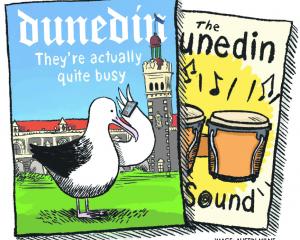
Historically, high net immigration is a major source of support to the New Zealand economy, having contributed more than 70% of resident population growth over the last few years.
ASB chief economist Nick Tuffley said yesterday strong population growth had boosted labour market capacity but had also placed pressure on housing provision and wider infrastructure.
Recent data had signalled a slow down in the migration inflow. Monthly net permanent and long-term immigration had slowed to a three-year low in February. Annual net permanent and long-term immigration fell below 70,000 people for the first time in 17 months.
Moderation had been driven by the strengthening in permanent and long-term departures from historically low levels, he said.
``We expect this trend to continue, given the strengthening global economy and robust Australian labour market backdrop.''
While the peak in net
immigration had passed, the expectation was permanent and long-term arrivals would continue to hold up, given the solid New Zealand domestic backdrop and the strong allure of New Zealand as a safe and secure destination.
The ASB expected net immigration of about 60,000 people this year and 50,000 next year, Mr Tuffley said.
Also out this week will be Australian inflation for the March quarter.
Craigs Investment Partners broker Chris Timms said markets were expecting a headline Consumer Price Index inflation increase of 0.5% for the March quarter and 1.9% annually, similar to what was seen three months ago.
New Zealand's inflation was 1.1% in March.
Two important central bank meetings were taking place this week, he said.
At 11.45pm on Thursday, the European Central Bank would release its latest monetary policy decisions, followed by the Bank of Japan on Friday.
At its March meeting, the ECB dropped its easing bias, removing the statement from its commentary saying it was ready to increase the level of bond purchases in both duration and/or size, should the economic outlook deteriorate, Mr Timms said.
Late in the week, the advance estimate of United States economic growth for the March quarter would be released. Markets were expecting annualised growth of 2%.
``This will be down from the previous quarter, where growth was 2.9%, having been revised up slightly from earlier estimates.''
The strength came on the back of the biggest quarterly increase in consumer spending in more than 11 years, something likely to reverse in the March quarter.
The March quarter would also be the first to include any impact from tax cuts in the US which took effect from January 1, he said.













